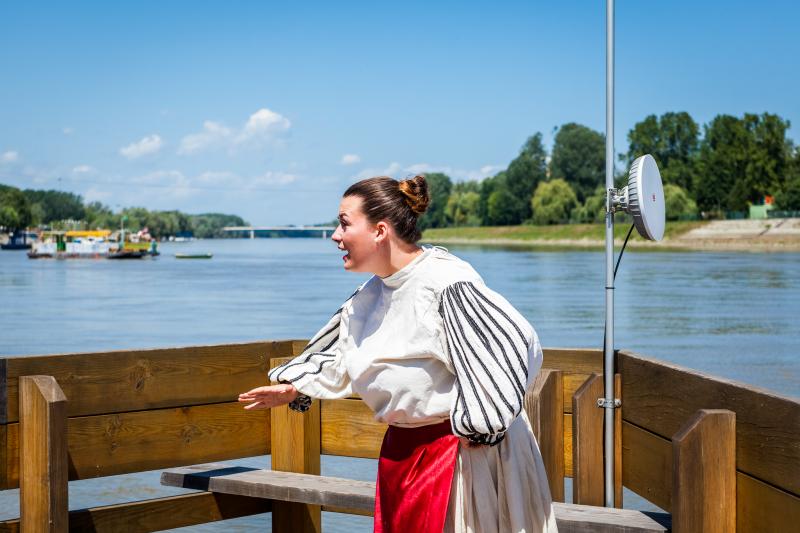Back to module list
Introduction

Actress rehearsing, wearing traditional folk costume, location City of Osijek,
Copyright Museum of Slavonia
Every play begins with an idea. The idea is the main thought that triggers the whole process of playing the game. Sometimes a sentence is enough to trigger a play. Once you have determined the basic idea, you need to prepare a detailed synopsis in which you will describe the idea for the play. Afterwards you need to create a script. The script describes the scenes, specifies who and what characters actors will represent, how they appear, what they do and say. The script puts the play into a logical order and with a progressive intensity, so smaller events lead on to the most important. Grandma’s stories have a strong message. We often remember special moments from our lives, but also the lives of people we know. Numerous films and even theatrical performances are based on true stories. The theme of a film extends our life experience and understanding of the world and the relationship around us. The theme teaches or acquaints you with different cultures, characters and actions. It conveys our experience and introduces us to the way peoplereact to the world around them.
Task
Practice makes every play perfect, students of Academy of Fine Arts rehearsing a scene.
Copyright Museum of Slavonia
Interview an older woman and make a lay from her story about migration (mother or granddaughter, neighbour or teacher). It can be quite exciting. True stories are ideal for creating a drama play. Therefore it is important to gather all necessary facts through thorough research.
Process

The theme of a drama play extends our life experience and understanding of the world
Copyright Museum of Slavonia
Interview an older woman (mother or granddaughter, neighbour or teacher) and learn more about her life.
Try to find out more information regarding:
- A precious object from their home country or if not possible a memory, some favourite food etc.
- Some photos from their past
- Family members
- Visual appearance important for play characters description.
- Customs, cultural identity.
Finally decide what idea will be the plays theme.
Check out these useful web links with interesting guidelines of how to create a story script!
https://www.youtube.com/watch?v=Aq4jnZfnKS4 Story Elements: Characters
https://www.youtube.com/watch?v=7V9If3aPpuM An Overview of the Rehearsal Process for Much Ado
About Nothing
Exercise 1. You have chosen the theme! Create a synopsis.
The synopsis is a record describing the theme and characters of play. Remember! Find out more about people and details from their lives to be able to better describe the features and characteristics of the characters that will appear in the play. Each character must be described (its appearance, age, characteristics). It is also necessary to clarify their interrelationships.
- Describe the theme,
- Describe the characters (appearance and nature);
- Clarify relationship between characters,
- Describe location and time of the play (town or village, house, backyard, room, etc., morning or evening, spring or winter)
Exercise 2. After selecting a theme, characterizing the characters and clarifying their relationships you can
start with making a scenario.
Let's remember! In the scenario we show events through a logical sequence. The script can be from a few
pages up to a hundred. But, for starters, it's enough to prepare a short scenario through several scenes.
Afterwards every new scenario will be done more easily. We wish you success in writing your play.
- Chose the plot of scenario (plot is main event or events of play)
- Chose characters who will play main roles in plot,
- Describe the scenery, scene, location and time,
- Chose how many scenes will be integrated in scenario and describe each scene for itself.
Remember!
Scene is one of the subdivisions of a play. A scene can present continuous action in one place, a single situation or unit of dialogue in a play.









